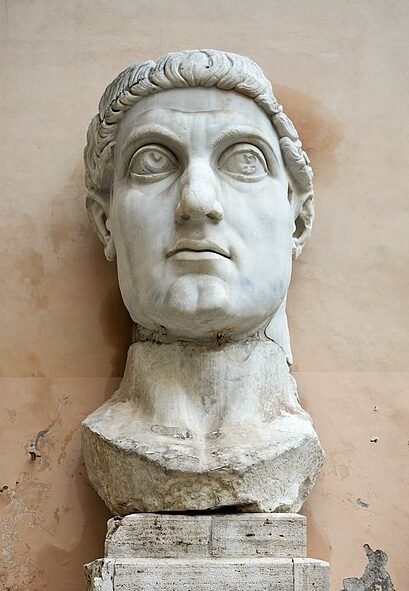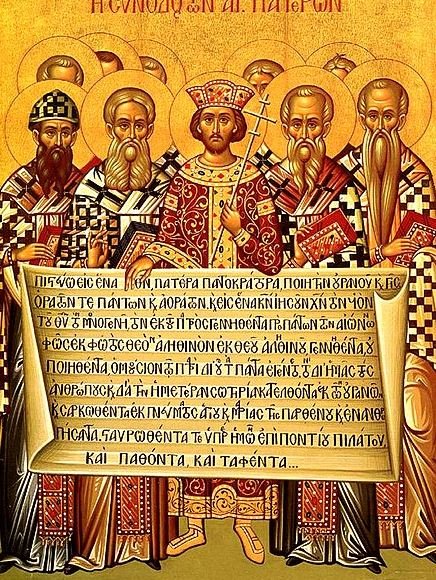Life and Major Writings of Arius, the Founder of Arianism
Arius was a Christian presbyter in Alexandria, Egypt, during the early 4th century. He became a central figure in one of the most significant theological controversies in early Christianity, known as Arianism. His life and teachings had a profound impact on the development of Christian doctrine, leading to the first ecumenical council and the establishment of foundational theological principles that continue to influence Christianity today.
Early Life and Background
Arius was born around 256 AD, likely in Libya, although some sources suggest Alexandria. Little is known about his early life, but it is clear that he received a good education, probably in Alexandria, which was one of the most important centers of learning in the Roman Empire. Alexandria was a melting pot of cultures and ideas, providing a fertile ground for theological debate and intellectual development.
Clerical Career
Arius became a presbyter (a senior member of the clergy) in Alexandria, serving under Bishop Alexander. His reputation for piety, asceticism, and eloquence made him a respected figure in the Christian community. He was known for his charismatic preaching and his ability to engage with the theological issues of the day.
Arian Controversy
The controversy that bears Arius’s name began around 318 AD when he clashed with Bishop Alexander over the nature of Christ. Arius’s central thesis was that Jesus Christ, the Son of God, was not co-eternal with the Father and was a created being. This position was encapsulated in the phrase “there was a time when the Son was not.” Arius argued that since the Son was begotten by the Father, he must have had a beginning and was therefore not eternal like the Father.
Arius’s views were rooted in a strict monotheism and a desire to maintain the transcendence and uniqueness of God the Father. He believed that if the Son were co-eternal and of the same substance as the Father, it would undermine the concept of monotheism and lead to a form of polytheism.

The Arian controversy forced the Church to clarify its theological positions on the nature of Christ and the Trinity, leading to the formulation of key doctrines that remain central to mainstream Christianity. A painting showing the First Council of Nikea. In this artwork, Arius is depicted beneath the feet of Constantine the Great and the bishops.
Major Writings by Arius
Arius’s writings primarily consisted of letters, theological treatises, and hymns. Unfortunately, most of his works have been lost, and what survives is often preserved in the writings of his opponents. The following are some of the key documents and ideas associated with Arius:
- Thalia (The Banquet)
The “Thalia” is perhaps the most famous work attributed to Arius. It was written in a poetic and rhythmic style, making it accessible and memorable for ordinary Christians. In the “Thalia,” Arius articulated his theological views, emphasizing the created nature of the Son and the distinction between the Father and the Son. This work was widely circulated and became a tool for spreading Arianism.
- Letters
Arius wrote several letters to various bishops and other church leaders to explain and defend his views. One of the most significant is his letter to Eusebius of Nicomedia, in which he outlined his theological position and sought support. In these letters, Arius argued that his views were consistent with the teachings of previous church fathers and sought to demonstrate that his opponents were the ones deviating from orthodoxy.
- Hymns
Arius also composed hymns that encapsulated his theological ideas. These hymns were an effective means of spreading his teachings among the laity, as they could be easily memorized and sung during worship. The use of hymns helped to popularize Arianism and embed it within the devotional life of many Christian communities.

Arius’s letters, such as his letter to Eusebius of Nicomedia, were instrumental in explaining and defending his views, rallying support, and articulating his arguments against his opponents. Image: A painting portraying Arius.
Opposition and Condemnation
Arius’s teachings quickly attracted both support and opposition. Bishop Alexander of Alexandria was one of his most vocal critics, arguing that Arius’s views undermined the divinity of Christ and the doctrine of the Trinity. The controversy spread beyond Alexandria, drawing in church leaders from across the Roman Empire.
In 325 AD, Emperor Constantine (also known as Constantine the Great), seeking to preserve the unity of the Church and the Empire, convened the First Council of Nicaea. This ecumenical council brought together bishops from all over the Christian world to address the Arian controversy and other theological issues.
At the Council of Nicaea, Arius’s views were debated extensively. The majority of the bishops rejected his teachings, and the council produced the Nicene Creed, which affirmed the co-eternity and consubstantiality (of the same substance) of the Son with the Father. Arius was excommunicated, and his works were condemned as heretical.

The Council of Nicaea set a precedent for using ecumenical councils to resolve theological disputes and maintain the unity of the Church, influencing subsequent councils like the Council of Constantinople (381 AD) and the Council of Chalcedon (451 AD). Image: A statue depicting the head of Constantine the Great.
Why did Roman Emperor Constantine the Great convert to Christianity?
Aftermath and Legacy
Despite his condemnation at Nicaea, Arianism did not disappear. Arius continued to have a significant following, particularly in the eastern provinces of the Roman Empire. The controversy persisted, leading to further councils and debates over the next few decades.
Arius himself was eventually reinstated by Emperor Constantine in 327 AD, but his return to favor was short-lived. He died in 336 AD under mysterious circumstances, possibly poisoned, while waiting to be readmitted to the Church in Constantinople.
The Arian controversy continued to shape Christian theology and church politics for many years after Arius’s death. Arianism found support among various Germanic tribes, including the Goths and Vandals, and remained influential in some regions well into the early Middle Ages.
Impact on Christian Theology
Arius’s teachings and the resulting controversy had a profound impact on the development of Christian doctrine. The debates over the nature of Christ and the Trinity forced the Church to clarify its theological positions and led to the formulation of key doctrines that remain central to mainstream Christianity.
The Nicene Creed, produced in response to Arianism, became a foundational statement of Christian belief, emphasizing the co-eternity and consubstantiality of the Father, Son, and Holy Spirit. This creed has been recited by Christians in various traditions for centuries and continues to be a touchstone of orthodox Christian faith.
The Arian controversy also highlighted the importance of ecumenical councils in resolving theological disputes and maintaining the unity of the Church. The decisions made at Nicaea set a precedent for how the Church would address doctrinal issues in the future, leading to subsequent councils such as the Council of Constantinople (381 AD) and the Council of Chalcedon (451 AD).
Questions and Answers
The legacy of Arius and the Arian controversy is a testament to the complexity of early Christian theology and the ongoing process of doctrinal development within the Church. The debates and decisions of this period laid the groundwork for much of what would become the orthodox Christian understanding of the nature of God and the relationship between the Father, Son, and Holy Spirit.
Below are some frequently asked questions about Arius and the Arian controversy:
When and where was Arius born?
Arius was born around 250 or 256 AD in Libya, specifically in the region of Cyrenaica. Arius moved to Alexandria, a prominent center of early Christianity and intellectual thought.
What is the central claim of Arius’s theology?
The central claim of Arius’s theology is that the Son of God was a created being and not coeternal with the Father. He argued that there must have been a time when the Son did not exist.

What belief underpins Arius’s theological views?
Arius’s theological views are rooted in subordinationism, which maintains that the Son and the Holy Spirit are subordinate to the Father in nature and being.
How did Arius’s views compare with those of other 3rd-century Christian theologians?
Many Christian theologians of the 3rd century shared similar subordinationist views, but Arius’s teachings brought this position into sharp focus, especially regarding the created nature of the Son.
One of Arius’s most prominent opponents was Athanasius of Alexandria.
So severe was the controversy that Emperor Constantine had to convene a council to unify the Christian Church and resolve the theological divisions that threatened its stability.

Nicene writers, such as Athanasius, used Arius as a focal point in their polemics against subordinationist theology, depicting him as the primary heretic and shaping the historical narrative about Arianism. Image: Athanasius (c. 296–298 – 373).
What was the outcome of the First Council of Nicaea regarding Arius’s teachings?
The council condemned Arius’s views and formulated the Nicene Creed, which affirmed the coeternity and consubstantiality of the Son with the Father.
The Nicene Creed explicitly rejected Arianism by stating that the Son is “begotten, not made, being of one substance with the Father.”

The Nicene Creed emerged from the council, affirming the coeternity and consubstantiality of the Father, Son, and Holy Spirit. Image: A painting showing Emperor Constantine (middle) together with the bishops of the First Council of Nicaea holding the Nicene Creed.
Did Arianism disappear after the First Council of Nicaea?
No, Arianism did not disappear. It continued to have significant support, particularly in the eastern regions of the Roman Empire.
What happened to Arius after the Council of Nicaea?
Arius was excommunicated but later reinstated by Constantine in 327 AD. He died in 336 AD under mysterious circumstances before being fully readmitted to the Church in Constantinople.
Arianism found adherents among various Germanic tribes, such as the Goths and Vandals, and remained influential in some regions well into the early Middle Ages.

How do modern historians view Arius’s role in Arianism?
Modern historians, such as Rowan Williams and Richard Hanson, argue that Arius was not the sole originator of Arianism but a prominent figure within a broader theological movement. His role has been seen as a catalyst for a doctrinal crisis rather than the founder of a sect.
How did Constantine’s vision at Milvian Bridge facilitate the spread of Christianity?
























